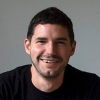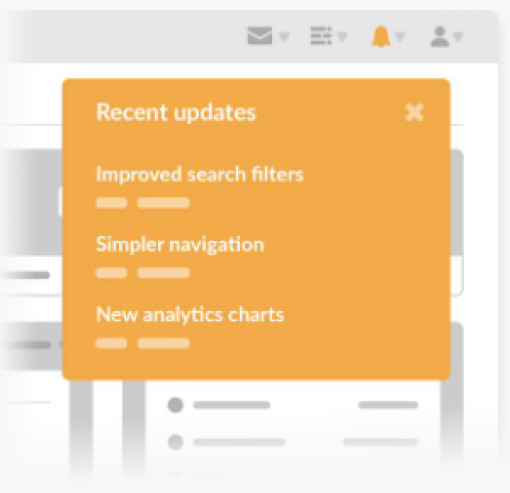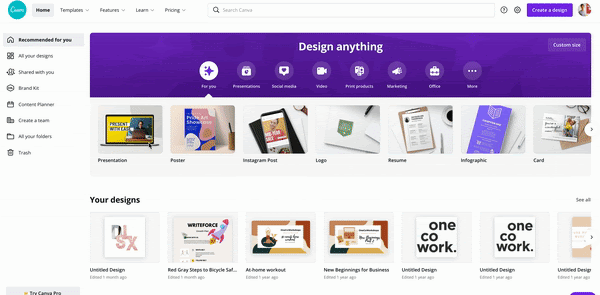Remember the story of the tortoise and the hare? A quick recap: they had a race.
While everyone was looking at the hare, it got overly confident and took a nap. The tortoise overtook it and won the race. The moral of the story? Slow and steady wins the race.
SaaS users are our tortoise. They notoriously take months to convert into paying customers, especially at an enterprise level, and there are many steps they need to take to get there.
However, by remaining consistent and steady, convert they will, and win your SaaS business shall.
Micro-conversions are at the very core of this journey. They are the reason for the customer journey being so tricky, in-depth, and such a great area of importance for product managers and product-led growth.
You can’t expect users to jump straight to the finish line. Long-term users are slow movers. This is precisely where you need to focus product marketing efforts; on each baby step along the way.
Introducing micro-conversions, why they’re important, how to track them, and how to boost them in your customer journey. Why? Because when product teams focus on micro-conversions, macro-conversions come with more stability, consistency, and a longer customer lifetime value (CLTV).
Let’s get that tortoise to the finish line.
What is a micro-conversion?
A micro-conversion is a small action a user takes towards a larger—usually ROI-centered—business goal. Micro-conversions are split into two types.
Process Milestones are small conversions that indicate someone is moving toward an end goal. A few examples of micro-conversion process milestones are:
- A website visit
- A demo request
- Completing an onboarding flow
- Inviting a friend to try your product
What’s noteworthy above? You have sales process milestones and customer process milestones.
These positive actions can take place throughout the entire customer lifecycle. Where the first two examples are positive suggestions someone will make a purchase and convert to a regular customer, the last two examples are positive signs someone will remain a customer.
Secondary Actions are micro-conversions that don’t necessarily suggest someone is going to convert to a paying customer, but they do suggest product awareness and brand trust.
These types of conversions tend to be a little trickier to track as product teams notoriously don’t place emphasis on them. However, they’re positive signs nonetheless.
A few examples of secondary actions are:
- Following the business on social media
- Interacting with the video ads
- Reading the blog regularly
- Developing a positive brand affinity
In short, micro-conversions are tiny tortoise-sized steps orienting towards an ROI-centric finish line.
Micro-conversions vs. the “Aha!” moment
Question up for debate: Is the “Aha!” moment a micro-conversion?
The short answer, no.
Did you think we would give you a “they’re all winners” response that will leave you feeling like you’re the last one to the buffet? Never.
Let’s remember that macro-conversions are typically ROI-orientated actions and an “Aha!” moment is not that—although it is a drastic contributor towards that.
Given what we’ve discussed earlier, an “Aha!” moment is a micro-conversion for a sale. It is a process milestone.
The journey to this particular process milestone (the “Aha!” moment) is made up of many teeny, tiny micro-conversions—for lack of a better term.

“The “Aha!” moment provides users with the value they were seeking when they signed up to your offering, whereas micro-conversions help create a chain of opt-ins that pull the necessary input from the user so the Aha! can take place.”
Take Slack, for example, where a contributing micro-conversion toward the larger ”Aha!” moment could be:
Adding a team member
Uploading a profile photo
Using the slack bot
The “Aha!” moment could be solving a problem with a teammate on Slack.
So, the two overlap; however, they are different in terms of the amount of weight they hold/distance they cover toward a macro-conversion.

Drive Feature Adoption 🚀
Attach a release log to a widget or any native button in your app with Chameleon, and announce features in context
Micro-conversions vs. macro-conversions
A micro-conversion is an action a user takes that signifies they’re making progress toward an ROI-centric business metric.
For example:
Subscribing to a newsletter
Requesting a demo
Visiting the product page
Completing an onboarding
A macro-conversion, on the other hand, is a profit-orientated action, like:
Switching from a free trial to a paid plan
Signing up for a new feature

“Micro-conversions for their own sake are a bit of an oxymoron. Micro-conversions lead users to macro-conversions, the core events that demonstrate your offering's value and create revenue opportunities for your business. Leverage them in service of achieving high conversion rates on your macro-conversions.”
Macro-conversions are what all SaaS product managers celebrate; however, micro-conversions are what they need to aim for.
Real-life examples of micro-conversions
So what do these mythical micro-creatures look like in real life? Let’s take a look at some SaaS businesses that are making a mighty big deal out of micro-conversions.
1. Chameleon: Visiting the pricing page
(Source)
Visiting the pricing page is a micro-conversion in itself. It’s a sign that someone is interested in your product but has not made a purchase yet.
If you’ve got the tools to track this action from a visitor, it’s powerful data that can signal when’s a good time to push a campaign or a sales flow via another channel or web personalization.
For the Chameleon product team, we support this conversion with a chatbot.
2. Alaya: Ebook download

(Source)
Reading blog posts is one thing, but a content download is an extremely positive micro-conversion.
For one, you’re collecting someone’s contact information. Of course, it’s only fair (and legal) that you use this information to deliver what they’ve asked for.
However, it’s a firm step in the door/inbox, and if you get the delivery of your follow-up email right, it will drastically increase your chances of converting to a sale later on.
Secondly, this micro-conversion is a good sign you’re building brand trust and content topic authority.
People don’t like forms, 81% of people have abandoned an online form after beginning to fill it out. We’re bored of entering our information in them, and so when we come across gated content, we’re a lot more selective today with whether we choose to continue or not.
Conclusion: if you’re winning this micro-conversion you’re winning a lot.
3. Canva: Create a team

(Source)
Users that onboard Canva into their working world most often have one job to be done. They want to export a design. This could be a whitepaper, an infographic, a social media post, the options are all there, but they want their design exported.
Until a user gets to their "Aha!" moment with Canva, there are a few micro-conversions that suggest they are on their way and starting to get benefit out of the tool.
Even if it’s not the benefit they came for, these micro-conversions—like creating a team—show they are more invested and more likely to stick around or convert from a freemium plan to a paid plan.
4. Slack: Create a channel

(Source)
Slack has multiple in-app micro-conversions that hint a user is edging toward a paid plan and a macro-conversion.
Product Managers want users to find their Aha! Moment and complete their job to be done as quickly and efficiently as possible. However, until they get there, if they have other positive experiences along the way, their chances of converting further down the line are that much higher.
For example, creating a new channel on Slack is a great sign that someone understands the tool and is looking to get benefit out of it.
Although this may not necessarily be what the user came to the platform to do, it’s a positive-micro-conversion to note and encourage—as Slack does with the Slack bot.
Understanding your product’s micro-conversions
Even if you’re not necessarily focussing on micro-conversions in your product journey, that doesn’t mean they’re not there. Here are three ways you can identify what your product’s micro-conversions are.
1. Watch FullStory/Hotjar recordings

(Source)
FullStory and Hotjar are both fantastic tools to give insights on how users are navigating your website, any sticky points they’re coming across along the way, and those pages or features they return to time and time again.
For example, take a look at those users that do (macro) convert and then dive back into their journey through your site. What did they do? Where did they visit? What encouraged them to convert?
2. View product analytics data using Mixpanel/Amplitude

(Source)
Mixpanel and Amplitude are SaaS tools that can help you shed light on how users are interacting with your product. Both of them provide good general product analytics.
With Mixpanel, you’ll be able to understand user behavior, segment and visualize user data, and measure the success of product launches.
With Amplitude, you’ll be able to predict which combination of features and customer actions result in revenue, adapt and personalize in-product experiences, bring valuable—legible—user insights to other teams in your SaaS business.

“A full tracking build-out in Segment and distributed to the rest of your analytics tools is also a great way to measure micro-conversions throughout your funnel.”
3. Consult with your team
There are a lot of teams within your business that will have valuable data you can adapt to your product marketing strategy. Sit down and chat with your sales, customer success, business development, and other relevant teams to get a quantitative and qualitative understanding of their research and data.
You may be surprised that certain areas of sales scripts or reactions to them act as a micro-conversion for sales. Whereas, customer success can upsell a contract when a user has had a particular in-product experience.
Find out what micro-conversions are for other teams, and see how you can replicate or use the information in product development.
The benefits of tracking micro-conversions
If you feel like you may struggle to convince your product team to bring a focus on micro-conversions, we’re here to help you make that business case more appealing. Here are three benefits of tracking micro-conversions.
1. Get insights on user behavior
Understanding micro-conversions can provide valuable insights into user behaviors—both in-app and pre-conversion.
When you start using some of the research tools and methods to track micro-conversions, you’ll naturally gain insights into how your users are interacting with your products and can identify ways to optimize their experience.
2. Give visibility to the organization
Micro-conversions give a fantastic insight into how your funnels and flows are working. They’ll also highlight those areas of your marketing and sales flows that hold more weight for users.
It may surprise you, but the areas that you are currently placing focus on, may not be the areas that should demand so much of your team’s time and attention.
3. Identify leaky buckets
When you draw a focus to micro-conversions you can start to measure those churn points in your flows that are just not quite cutting it.
Perhaps you’ve got a high drop-off rate and it’s not because of the content at all but actually, a button or link is broken. Perhaps, there’s a little too much friction that’s putting customers off.
Whatever’s going on, tracking micro-conversions ensures that you don’t lose anyone unnecessarily along the customer journey.

“Everything we ask users to do creates friction, causing some users to opt-out of continuing with your product. Understanding what points cause the most funnel leakage helps us build a prioritization list for future flow improvements and experiments.”
A simple tool you can use to track micro-conversions is Google Analytics. Of course, you’ll need to set up Google Analytics goals to track and know what these goals are in the first place.

(Source)
The only limitation with Google Analytics is it’s not built for products, and it’s not built specifically to highlight micro-conversions. So, you’ll need to be able to articulate what numbers under page views, bounce rates, and exits mean for your micro-conversions and build unique events.
How to boost micro-conversions with Chameleon
Once you’ve locked down your micro-conversions and your team understands the importance of them, it’s time to start benefiting from boosting them.
There are a few ways you can boost your micro-conversions using Chameleon.
Use tooltips to guide users
Tooltips are the perfect UX layer over your product. They’ll ensure users are subtly nudged toward any micro-conversion that will aid their macro-conversion.
Place your tooltips in those sticky points of your user journey, or plug any holes in those leaky buckets.
Create surveys to collect feedback
If you do start to notice a drop in micro-conversions at a specific point in the customer journey, then surveys are a great low-lift investigation into finding out what’s going on.
Ask customers how they’re finding their experience, and get quantitative data you can act on to prioritize which leaky buckets and UX improvements need to be worked on first.
Encourage self-serve discovery
Once you know every micro-conversion in-app opportunity you have that contributes toward a macro-conversion, why not guide your users through each one?
Launchers are great for progressive disclosure of your app or a new feature and can harmlessly guide users through a series of steps that are statistically proven to increase macro-conversion rates.
Plus, our latest Benchmark Report found 76% of users went on to start a tour after being encouraged by a launcher.
Download the Tours and Experiences Benchmark Report
We'll send you the report with insights from over 214 million interactions
Celebrate success throughout the journey
Despite their tiny size, micro-conversions are still conversions, which means they still take a certain amount of effort from users. Why not reward them, and gamify their journey a little more?
In-product celebratory modals are fantastic for reassuring people they’re on the right path and validating the action they’ve taken. They’re surprisingly encouraging for a user and lift their chances of converting more in the future. In fact, our abovementioned report has shown that 86% of users who engage with a lightbox or some other type of modal are likely to continue with a tour and stay engaged.
Time to find, track, and boost your micro-conversions
Let’s throw things back to the beginning, back to where it all started; with the tortoise and the hare. It’s important to remember in the SaaS world we’re aiming for that slow, steady, and reliable tortoise to convert.
However, that doesn’t mean we can’t streamline the progress along the race track. Add bumpers, celebrate milestones, put a map in said tortoise’s toolkit.
When you focus on micro-conversions, you focus on the customer’s experience and every small win they achieve along the way. All of these wins for your customer, eventually result in a win for your business.
It just takes patience, persistence, and micro-conversions. We’ll see you at the finish line.

Weekly advice to make your product stick 💌
Be the first to get the latest product best practices and resources
This article is written by Ray Slater Berry, a freelance writer for Chameleon with over nine years of content marketing and social media experience. He specializes in product tech, travel, and SaaS. Ray is also a published fiction writer, with his first novel Golden Boy.
A big thank you to Colin James Belyea, Senior Growth Strategist at Bell Curve and Head of Growth and Product at Outsite, for his contribution to this article. Follow him on Twitter for more insights.




